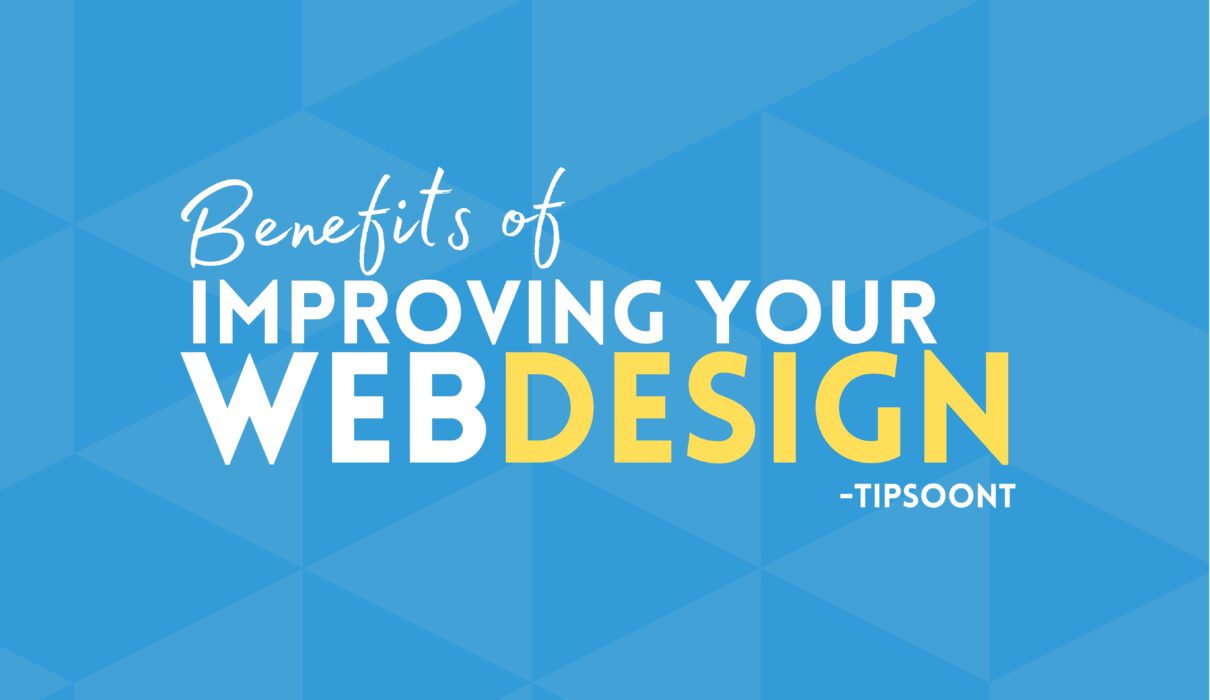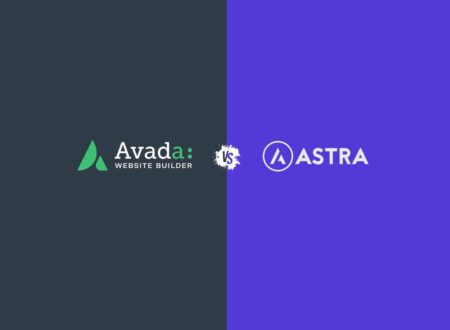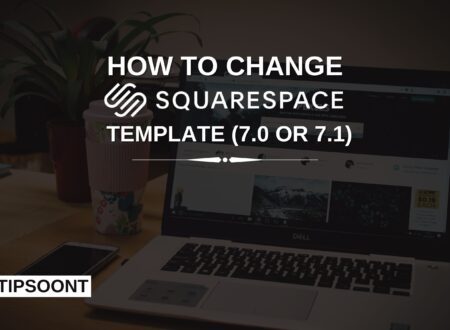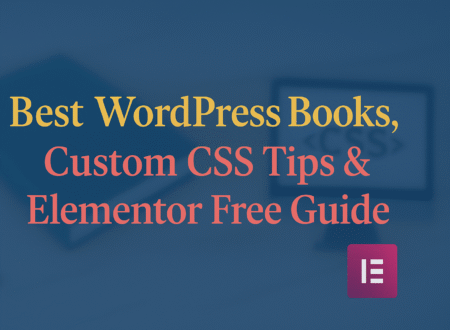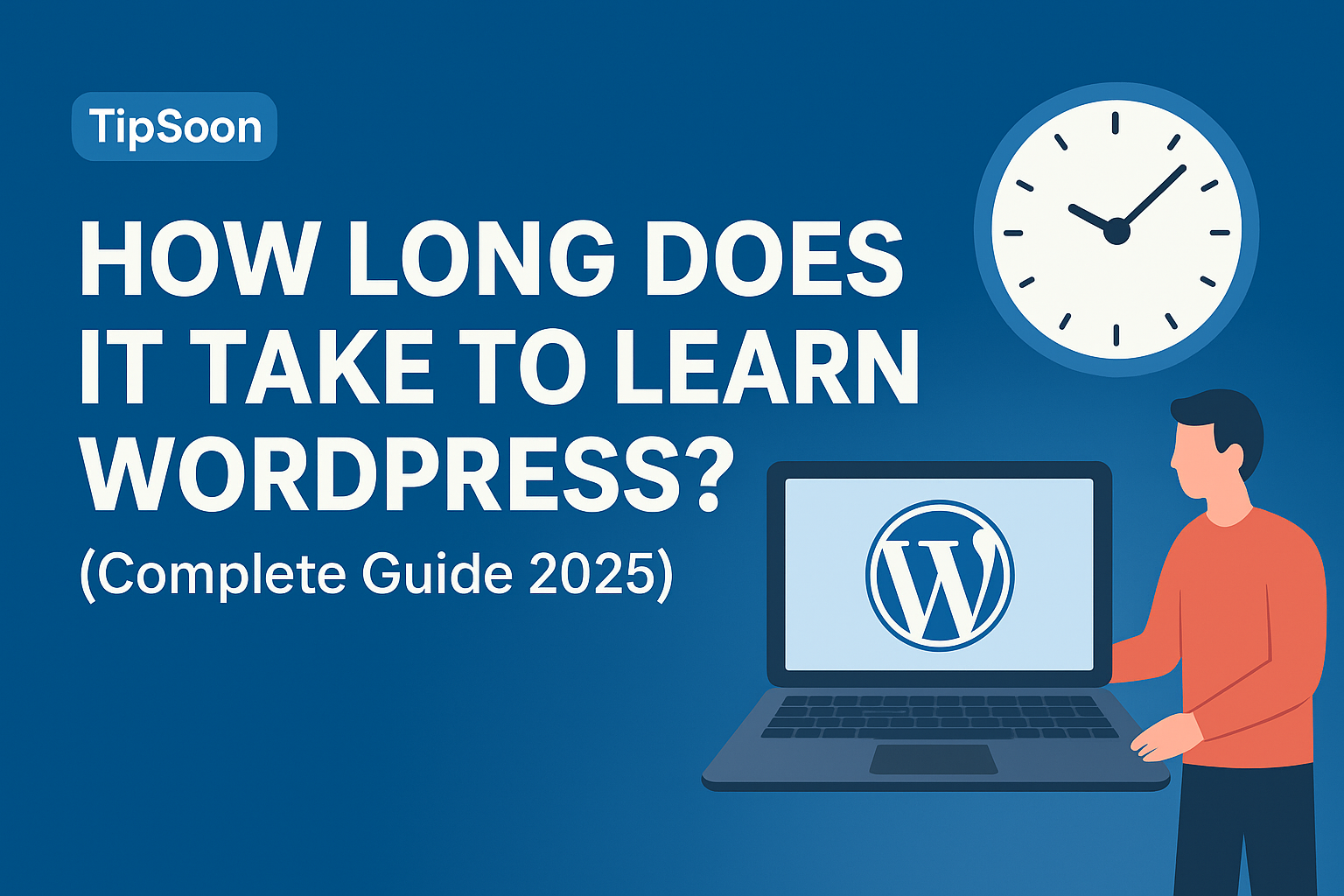Discover the key benefits of improving your web design in 2025. Enhance user experience, SEO rankings, conversions, and brand credibility with a modern website.
Introduction
At present, your website is your brand’s storefront. Visitors often decide within seconds whether to stay or leave based on your web design. A well-structured, responsive, and user-friendly design doesn’t just look good—it drives SEO performance, customer trust, and sales conversions.
Nowadays, creating websites is easy. Significantly, different CMS systems have made it erroneously easy; even without knowing a single code, you can create your own. Well, this isn’t it because having a professional web design also matters a lot.
That’s why you need to know all those benefits of website design, which would lead you toward better results. Especially if you are one of those people who consider web designing to be all about drag and drop, buckle up your sleeves to read the importance of an effective and responsive website design.
In this blog, we’ll dive deep into the top benefits of improving your web design and why investing in it can set your business apart in 2025.
What is a professional web design?
A professional web design in 2025 refers to the creation and development of a website that is visually appealing, highly functional, user-friendly, and aligned with the brand’s identity and business goals. It thoughtfully combines aesthetics, usability, performance, and responsiveness to provide an optimal experience across devices.
Key aspects of professional web design include:
- Aesthetic Appeal: Clean, modern, and consistent visual elements like colors, typography, and layout that reflect the brand values and capture visitor attention.
- Usability: Intuitive navigation and interface design that ensures visitors can find information quickly and perform actions easily.
- Functionality: Smooth performance with fast loading times, interactive features, and cross-browser compatibility.
- User Experience (UX): Focus on user needs through responsive design, accessibility, and engaging content presentation.
- Business Alignment: Designed to increase conversion rates, build trust, and support marketing goals by guiding users seamlessly toward desired actions.
How It Differs from DIY or Template-Based Designs
Unlike DIY tools or pre-made templates that limit customization, professional web design is tailored to your brand’s identity, goals, and audience. These custom designs take into account your user journey, SEO needs, and responsiveness across devices.
9 Elements of a Good Web Design
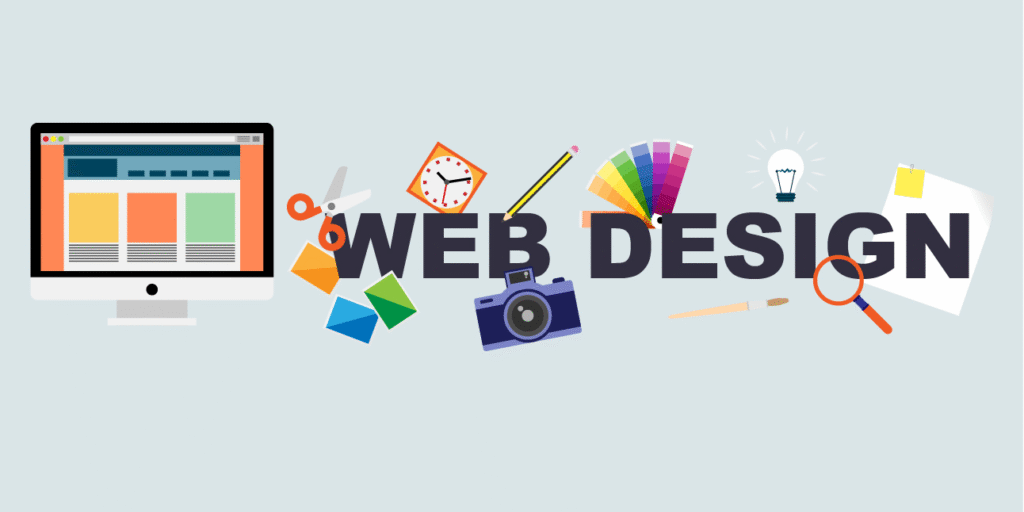
1. Responsive Design
- Your website must adapt to all devices — desktops, tablets, and smartphones.
- With most traffic coming from mobile, mobile-first design is a must.
2. Load time
- Users expect websites to load in under 3 seconds.
- Optimize images, enable caching, and use a fast hosting provider.
- Speed also improves Google rankings.
- A clear menu structure with categories, dropdowns, and internal links.
- Helps visitors find what they need quickly.
- Good navigation reduces bounce rates.
4. Visual Hierarchy & Layout
- Use fonts, colors, and spacing strategically.
- Important information (CTAs, headlines) should stand out.
- A clean layout keeps users focused.
5. High-Quality Content
- Engaging, keyword-rich, and valuable content builds authority.
- Content includes blogs, videos, images, and case studies.
- Content is king for SEO and user engagement.
6. Effective CTAs (Call-to-Actions)
- Buttons like “Contact Us,” “Get Started,” or “Shop Now.”
- CTAs should be visible and persuasive to drive conversions.
7. SEO Optimization
- On-page SEO elements: meta tags, alt text, headers, and schema markup.
- SEO ensures that your site ranks higher on Google and attracts organic traffic.
8. Security (SSL/HTTPS)
- Secure websites (with HTTPS) protect customer data.
- Builds trust with users and is favored by Google.
9. Consistent Branding
- Fonts, colors, logos, and imagery should align with your brand identity.
- Consistency builds recognition and professionalism.
10. Mobile Friendly
- Responsive Layout: The site automatically adjusts its layout and content to fit different screen sizes without horizontal scrolling.
- Touch-Friendly Elements: Buttons and links are sized and spaced appropriately to be easily tapped with fingers.
- Fast Loading Times: Mobile devices often rely on slower networks, so optimizing images and code helps pages load quickly.
- Readable Text: Text is scaled appropriately for small screens and avoids the need for zooming to read content.
- Simplified Navigation: Menus and interactions are designed to be easy to use on small, touch-based devices.
- Avoidance of Flash/Unsupported Plugins: Technologies that don’t work on mobile browsers are avoided to maintain functionality.
Mobile-friendly design is critical because the majority of web traffic now comes from mobile devices, and search engines like Google prioritize mobile-optimized sites in their rankings. It improves user satisfaction, accessibility, and conversion rates on mobile .
Tangible Long-Term Benefits of Improving Website Design:

1. Builds Credibility and Trust
A modern, professional-looking website immediately tells visitors that your business is legitimate. First impressions matter, and a clean design helps establish trust and authority, making users feel more confident in engaging with your brand.
2. Enhances User Experience (UX)
A well-designed website provides intuitive navigation, clear calls-to-action, and visually appealing layouts that keep visitors engaged and reduce bounce rates.
Good design improves navigation, readability, and functionality. Features like intuitive menus, clear call-to-actions, and mobile responsiveness make it easier for visitors to find what they need, reducing frustration and increasing engagement.
3. Boosts SEO Performance
Website design directly affects your Google rankings. Fast load times, mobile-friendly layouts, and structured content enhance Core Web Vitals, increasing your site’s likelihood of appearing on the first page of search results.
4. Increases Conversions
A strategically designed website guides users through a conversion journey—from discovering your services to taking action, whether it’s making a purchase, booking a call, or subscribing to a newsletter. This can significantly improve sales and lead generation.
5. Strengthens Brand Identity
Your website reflects your brand’s personality. Consistent colors, typography, and visuals create a memorable impression, helping you stand out from competitors and reinforcing your brand identity in the minds of visitors.
6. Ensures Mobile Responsiveness
With more than 60% of users browsing on mobile devices, responsive design ensures your site adapts seamlessly to all screen sizes. This improves accessibility and keeps you from losing potential customers.
7. Provides a Competitive Advantage
An outdated website makes your business look irrelevant. By investing in modern web design, you gain a competitive edge, positioning your brand as forward-thinking and customer-focused.
8. Professional Look and User Trust
As the saying goes, the first impression is the last, and the same goes for websites. The first look at your website matters the most and needs to be considered. That’s why the critical benefit of a web design is that it creates a professional look and leaves a good impression on the user, which will ultimately help them decide whether to navigate the site.
An outdated website wouldn’t look appealing to him, and he might lose interest, so you need to create the first impression about your business or services through your site design. Moreover, you need more than a functional design to make you credible, so creating a professional design would also help the user trust your service or products.
If your user has stayed for more than 30 to 40 seconds on your site, then congratulations, you succeeded in leaving a good first impression, and now it’s time to deliver what they were looking for.
9. Need of the hour:
Suppose your competitors are growing and improving themselves day by day, but you are sticking with the same design and approach; would you get the ultimate benefit in this digital era? No, you won’t! That’s why nobody can stop you from growing if you ignore the importance of web design.
If a large number of competitors surround you, then you need to focus on the benefits of website design on a priority, where the number one benefit of doing it will be to stand out from the crowd.
A website design not only includes simple drag and drop, but also the colors and font selection need to be considered, which may seem minor effects but collectively have a large effect. Implementing all these strategies would help you stand out from your competitors, and you would get better results compared to them.
TIP: No need to use bright colors that may offend him. That’s why it’s better to get rid of old strategies. Find a suitable color scheme for your website that resonates with users’ needs.
10. SERP Rankings

All the search engines keep themselves updated, so the benefit of having a responsive web design would let the search engines understand and crawl your website correctly. Otherwise, your efforts might only be worth it once or if you keep your site up to date.
Now, you might wonder how the website design could affect the SEO of your site, so let us make it clear to you;
- You may have used codes in your website design that need to be SEO friendly.
- Moreover, let’s say you are publishing the content on your site, but what if it is performing poorly in search engines, which means messing up with many factors?
- Nowadays, Google has also launched an update named Core Web Vitals, so anyone who knows and works on search engines can easily understand its importance. The crux of this update was to put the user experience first, and you would quickly understand its importance when it comes to web design.
You need to prioritize your web design to get better search engine rankings and boost SEO traffic.
11. Bounce rate Vs. Revenue:
Another benefit of improving the website design is a decrease in Bounce rate and an increase in revenue; these factors are correlated. Whereas bounce rate means the user didn’t find your web design compelling and wants to go back. So, what makes them stay there is the design.
So, if a person stays on your site and keeps exploring and reading it, the chances are he found it helpful; as a result, the bounce rate would automatically reduce. The chances of generating revenue would increase.
That’s why if your website design is catchy enough, then the chances are he would stay there for long, and chances are you would also get the leads. Suppose you are doing PPC; you still need a responsive and catchy design for your site to attract the reader.
12.Optimised for All Devices & Browsers
Nothing ruins a user experience faster than a broken layout on certain devices.
Cross-browser compatibility ensures a uniform look on Chrome, Safari, Firefox, etc.
Reduces bounce rates and keeps users longer on your site..
Why Professional Web Design Is a Long-Term Investment
Professional web design is considered a long-term investment because it provides sustained benefits that drive business growth, reduce costs, and enhance user engagement over time. Here’s why:
- Cost Efficiency Over Time: Investing in a professionally designed website reduces frequent redesign costs by using scalable, flexible frameworks. Clean coding and best practices minimize maintenance, saving money and effort in the long run.
- Future-Proof Technology: Professional designs stay compatible with evolving browser standards, new devices, and emerging technologies. This adaptability prevents the need for complete overhauls and keeps your site current and functional.
- Higher Return on Investment (ROI): By focusing on user experience, SEO optimization, and conversion-driven layouts, professional websites attract more visitors, keep them engaged longer, and convert them into customers effectively.
- Enhanced Brand Credibility: A modern, consistent design communicates trust and professionalism, influencing potential customers’ perceptions positively and encouraging repeat visits.
- Ongoing Support and Scalability: Long-term collaboration with web designers ensures your website grows with your business, with regular updates, performance improvements, and security enhancements tailored to evolving needs.
In short, professional web design is not just about creating a website; it’s about building a durable, high-performing digital asset that continuously supports business objectives, adapts to change, and maximizes growth potential over years.
What is a Responsive Web Design
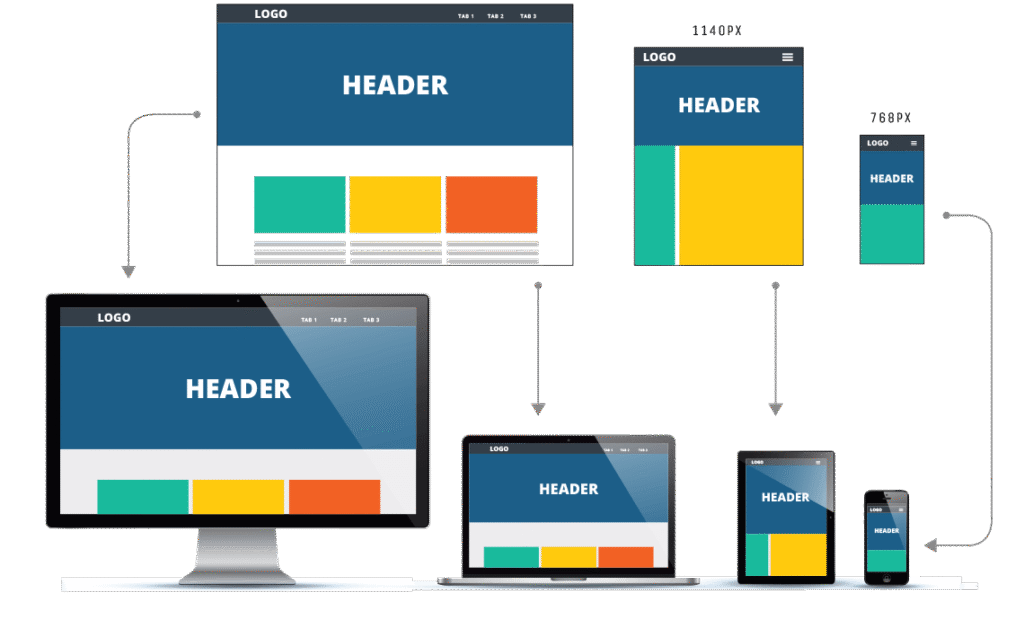
- Responsive Web Design (RWD) is a web development approach that enables websites to automatically adjust their layout, images, and content to fit any screen size, from desktops to smartphones.
- It ensures an optimal user experience by making navigation easy, content readable, and interactions smooth, regardless of the device being used.
- Responsive design improves SEO performance because search engines prioritize mobile-friendly websites, helping sites rank higher in search results.
- It reduces maintenance costs and complexity by allowing one website design to serve all devices rather than creating separate desktop and mobile versions.
- Responsive websites load faster through optimized images and flexible layouts, which leads to improved user engagement and higher conversion rates.
7 Benefits of a Responsive Web Design
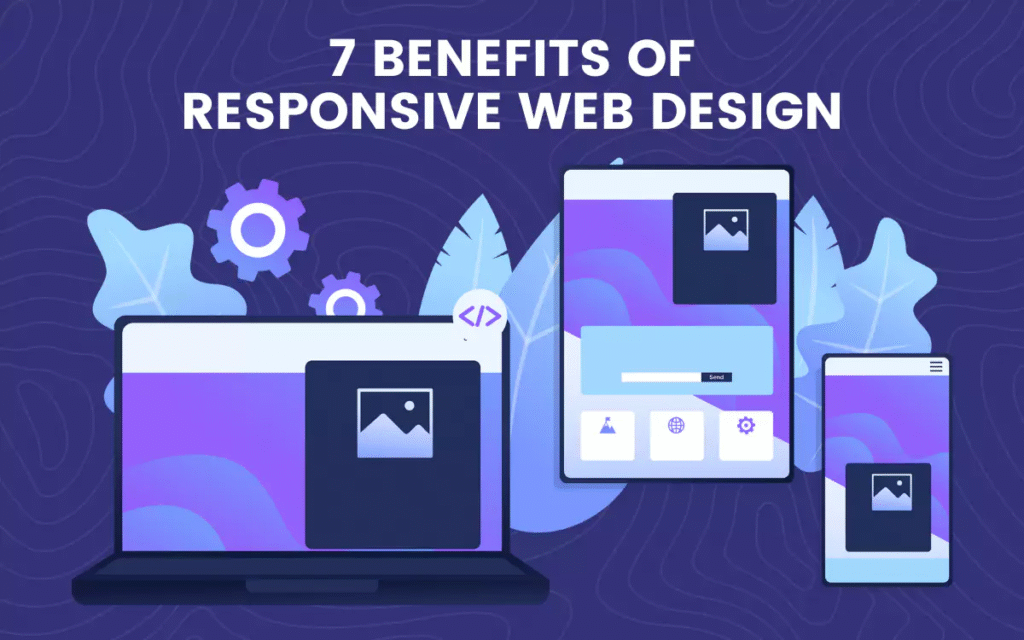
- Responsive web design creates a seamless user experience by automatically adjusting website layout and content to fit all screen sizes, from desktops to smartphones, ensuring easy navigation and readability.
- It boosts mobile traffic since more users browse on mobile devices, and responsive sites render perfectly on smaller screens without distortion.
- Responsive design reduces costs and development time by maintaining a single website for all devices instead of separate desktop and mobile versions.
- It improves page load speed, especially on mobiles, which keeps visitors engaged and reduces bounce rates.
- Responsive sites have lower bounce rates and higher user engagement because visitors find the site easy and enjoyable to use no matter what device they use.
- The improved user experience across devices leads to higher conversion rates, as users complete actions like purchases or signups more easily.
- Responsive design positively impacts SEO, helping websites rank higher on search engines by aligning with mobile-first indexing and providing better crawlability.
These benefits combine to enhance usability, performance, and business outcomes for websites employing responsive design.
Best Web Designing Tools in 2025
Web design tools are software applications and platforms that help designers and developers create, design, and build websites efficiently. These tools range from visual drag-and-drop editors to coding environments, UX/UI design apps, prototyping platforms, and image editing software.
Examples of web design tools
Here are some popular examples of web design tools in 2025:
- WordPress: A versatile platform ideal for designing and building websites with extensive themes and plugins.
- Wix: A code-free website builder featuring drag-and-drop editing and optimized templates for beginners.
- Webflow: Best for designing responsive websites with advanced animations and visual flexibility.
- Figma: Web-based UI/UX design and prototyping tool, popular for real-time collaboration.
- Adobe Dreamweaver: Combines visual design with coding features for designers who want control over both.
- Canva: A beginner-friendly graphic design tool used for creating web images and simple layouts.
- Google Web Designer: Used for creating engaging HTML5 designs and video content.
- Framer: Known for scaling page design with creative freedom and integrations.
- Sketch: Mac-only tool focused on wireframing, prototyping, and reusable templates.
These tools cover a broad range of needs from no-code site building, graphic design, UI/UX prototyping, to advanced coding and animation.
Modern web design trends
Modern web design trends in 2025 focus on creating engaging, user-friendly, and visually striking websites by combining innovation with usability. Key trends include:
- Bold and Experimental Typography: Oversized, layered, and expressive fonts add personality while enhancing readability and user experience.
- Dark Mode Design: Widely embraced for its aesthetic appeal and reduced eye strain, dark mode options improve user comfort and device battery life.
- 3D and Immersive Elements: Interactive 3D models, animations, and virtual reality features create dynamic, engaging user experiences.
- Sustainable and Eco-Friendly Design: Websites increasingly reflect values of sustainability through minimalist layouts, natural color palettes, and efficient resource use.
- Abstract and Organic Shapes: Breaking away from rigid grids, designs use fluid, rounded, and irregular shapes to add interest and a modern feel.
- Big Blocks and Vivid Contrast: Bold, block-based layouts with vibrant color contrasts improve visual hierarchy and guide user attention effectively.
- Anti-Design and Imperfection: Embracing asymmetry, overlapping elements, and raw aesthetics to foster authenticity and connection.
- AI and Voice Integration: More sites will use AI for personalized content and voice interfaces for easier navigation.
- Virtual and Augmented Reality: VR and AR will enhance product showcases and interactive experiences on websites.
These trends blend creativity with technology to build accessible, memorable, and high-performing websites in 2025.
WordPress: A Responsive Web Design

- Use AI-powered customization tools: WordPress themes and builders like Elementor AI enable automated design adjustments, content generation, and code optimization to speed up website creation and enhance user experience.
- Establish and maintain brand consistency: Incorporate consistent colors, fonts, logos, and messaging to create a clear, recognizable brand identity across all pages.
- Optimize for fast load times: Avoid heavy images or unnecessary elements to improve site speed, reducing bounce rates and improving usability.
- Ensure responsive design: Choose mobile-friendly themes and plugins to make the website fully functional and visually pleasing on all devices.
- Focus on clear navigation and content findability: Design simple menus, use contrast and whitespace to highlight important sections, and organize content logically for easy browsing.
- Use readable fonts and good typography: Stick with well-known, clean fonts like Arial or Verdana that enhance readability and accessibility.
These points are key to building WordPress sites in 2025 that look professional, load quickly, and offer an excellent user experience.
How Web Design Affects SEO and Ranking
1. Site Speed and Performance
A slow website hurts SEO rankings. Heavy images, poor coding, or unoptimized design can make your site sluggish. Search engines like Google prioritize fast-loading websites because they deliver a better user experience.
2. Mobile Responsiveness
With most searches happening on mobile devices, Google ranks mobile-friendly websites higher. A responsive design ensures your site adapts to all screen sizes, which directly impacts SEO.
Clear menus and logical page structures make it easy for users—and search engine crawlers—to find important content. Poor navigation can increase bounce rates, which negatively affects rankings.
4. User Engagement Signals
Search engines track how visitors interact with your site. If your design is clean and engaging, users stay longer, reducing bounce rates and increasing dwell time—both positive ranking factors.
5. On-Page Optimization Opportunities
Good design makes it easier to place headings, keywords, images, and internal links strategically. This helps search engines understand your content better and improves your chances of ranking.
6. Secure and Accessible Design
Websites with HTTPS encryption and clean coding practices rank higher. A well-designed site ensures secure connections and accessibility, both of which are SEO boosters.
Modern Web Design Trends in 2025
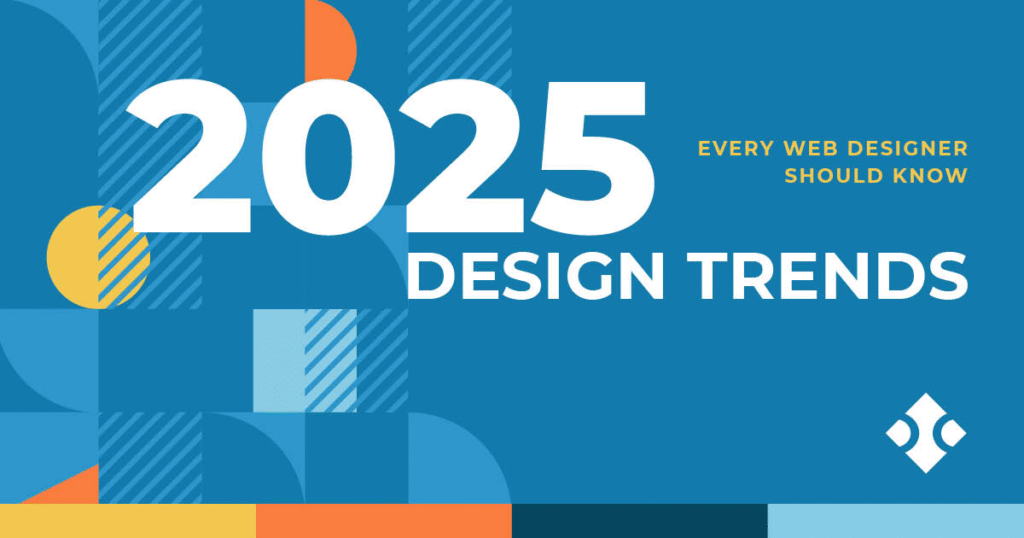
1. AI-Powered Personalization
AI is now at the core of web design. Sites adapt dynamically to user behavior—showing personalized content, product recommendations, or layouts that align with browsing patterns. This trend improves user engagement, dwell time, and conversions.
2. Minimalist & Clean Layouts
2025 web design favors simplicity over clutter. Clean white spaces, bold typography, and focused layouts make content easy to consume. Minimalist design reduces distractions and enhances SEO by improving page load speed.
3. Dark Mode & High-Contrast Themes
Dark mode continues to rise in popularity for better accessibility and energy savings. Many websites now offer toggle options, giving users control over their browsing experience.
4. Immersive 3D Elements & AR/VR Integration
Interactive 3D graphics and augmented reality previews are becoming standard in industries like e-commerce and real estate. For example, users can visualize furniture in their homes or preview products in real time before purchasing.
5. Voice Search & Conversational Interfaces
With the growth of smart speakers and AI assistants, web design in 2025 prioritizes voice-activated navigation and conversational chatbots. This ensures websites remain accessible for voice-driven queries, directly impacting SEO rankings.
6. Mobile-First & Responsive Design
Mobile devices dominate web traffic, so websites in 2025 are built with mobile-first indexing in mind. Faster loading, responsive layouts, and app-like functionality are crucial to keep bounce rates low.
7. Sustainable & Eco-Friendly Web Design
Green design is trending. Optimized images, reduced server loads, and eco-friendly hosting contribute to sustainability. Brands now highlight carbon-conscious web practices as part of their identity.
8. Micro-Interactions & Motion UI
Small animations like button hovers, scroll-triggered effects, and motion-based transitions create interactive experiences without overwhelming users. This subtle engagement makes sites feel modern and professional.
9. Inclusive & Accessible Design
Web accessibility (WCAG compliance) is no longer optional. Features like alt text, keyboard navigation, and high-contrast readability ensure inclusivity, improving SEO and user trust.
10. Faster, Performance-Driven Design
In 2025, Google’s Core Web Vitals will still play a major role in rankings. Lightweight code, lazy loading, and optimized multimedia are crucial for both user experience and SEO performance.
Brand identity through web design
Brand identity through web design involves using specific design elements to consistently communicate a brand’s personality, values, and message. Key points include:
- Memorable Logo Placement: Prominently display the brand logo on all pages, usually in the header, to reinforce recognition.
- Harmonized Color Palette: Use a consistent set of colors that reflect the brand’s tone and appeal emotionally to the target audience.
- Distinctive Typography: Choose legible and unique fonts that match the brand personality to create a cohesive text style.
- Consistent Visual Elements: Incorporate shapes, icons, and imagery that align with the brand’s style and message throughout the site.
- Clear Tone and Messaging: Use consistent language and voice in content that reflects the brand’s values and builds trust.
- User Experience Alignment: Design the experience to match how the brand wants users to feel, whether professional, friendly, or innovative.
- Responsive and Accessible Design: Ensure the brand identity is effectively presented across devices and is inclusive to all users.
- Strategic Design Guidelines: Document brand standards to maintain consistency across online and offline channels.
These elements work together to create an authentic, recognizable brand presence that fosters trust and emotional connection with users .
Tips for a responsive website design:
- While creating a web design for your brand, make sure to make it simpler to navigate so that the user can quickly navigate to where they want to read.
- Make your site responsive across all devices, smartphones, tablets, and desktops so that every user can relate and enjoy equally.
- Remember to write compelling copy with a solid CTA; most importantly, the site design should match the copy and writing style.
- Use only high-quality images and avoid distracted or unclear images because, in this way, you will not make your site credible.
- Font and color selections matter the most, so make sure to choose wisely.
Final Thoughts:
The benefits of improving your web design go far beyond aesthetics. From better SEO and higher conversions to brand trust and mobile responsiveness, a modern design is a powerful investment in your business growth. In 2025, websites that combine performance, creativity, and user-centricity will continue to dominate the digital space.
So, if your site feels outdated, now is the best time to revamp and turn your website into a growth engine.
You can keep the surety that this would be one of the most important investments you are going to make in improving the website design, whether it costs you money or time, but it would be worth it.
FAQs
Why is web design important for SEO?
Because Google ranks websites based on usability, speed, and structure—all linked to web design.
How often should I update my web design?
Every 2–3 years or when your website starts to look outdated compared to competitors.
Does web design affect conversions?
Yes. Clear CTAs, fast load speed, and a modern layout significantly increase conversions.
Can small businesses benefit from web design improvements?
Absolutely. Even minor design updates can boost credibility and lead generation.
What’s the biggest web design trend in 2025?
Minimalist, mobile-first designs with AI-powered personalization are leading trends.
- Astra Vs Avada – Which is The Best WP Theme for your site ? (2025 update) - September 27, 2025
- Squarespace Template Change Guide for Versions 7.0 and 7.1 in 2025 - September 17, 2025
- Best WordPress Books, Custom CSS Tips & Elementor Free Guide (2025) - September 17, 2025


